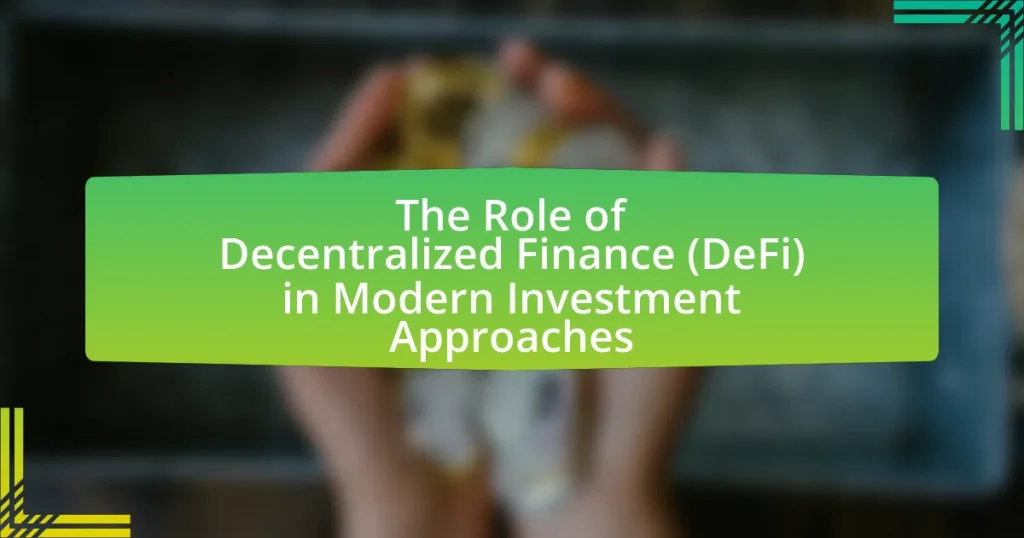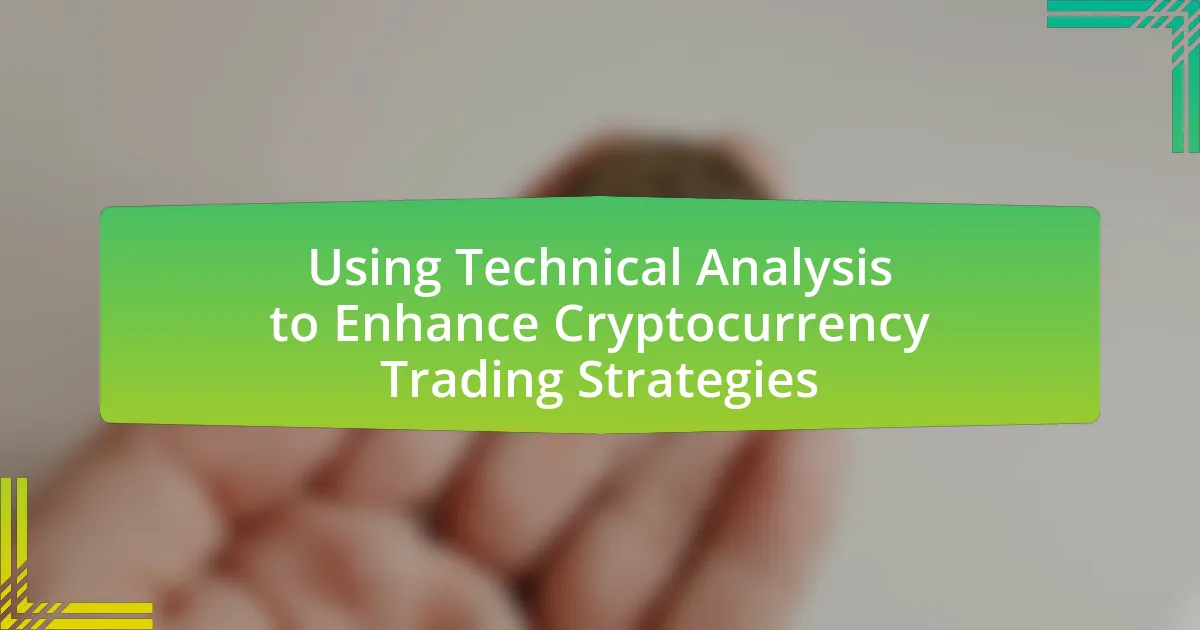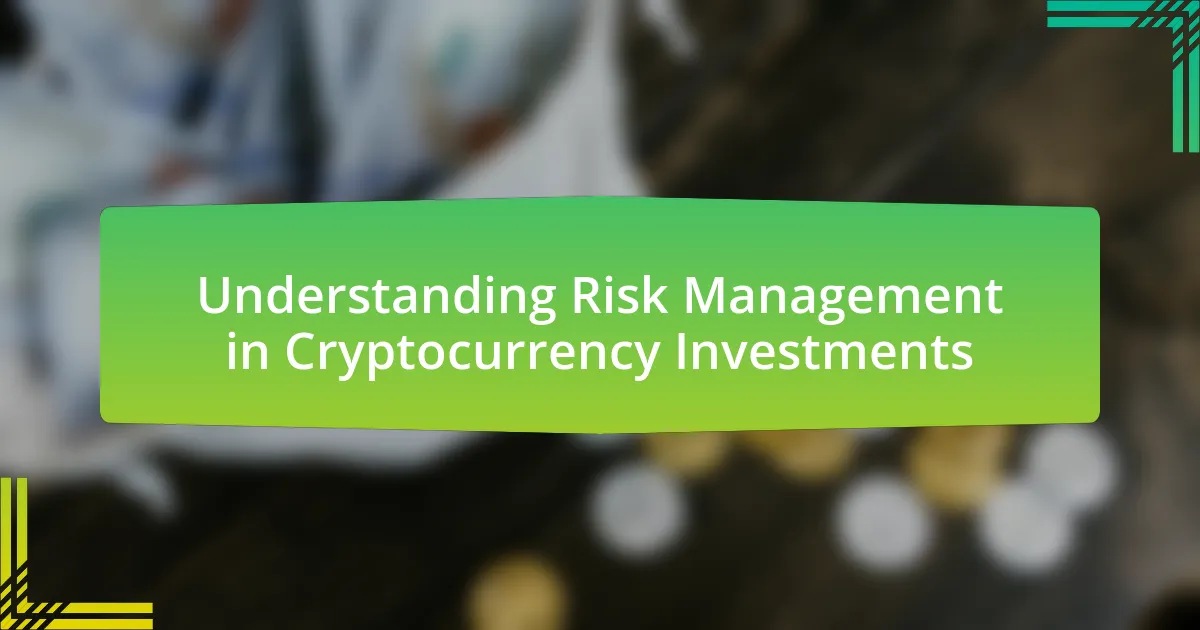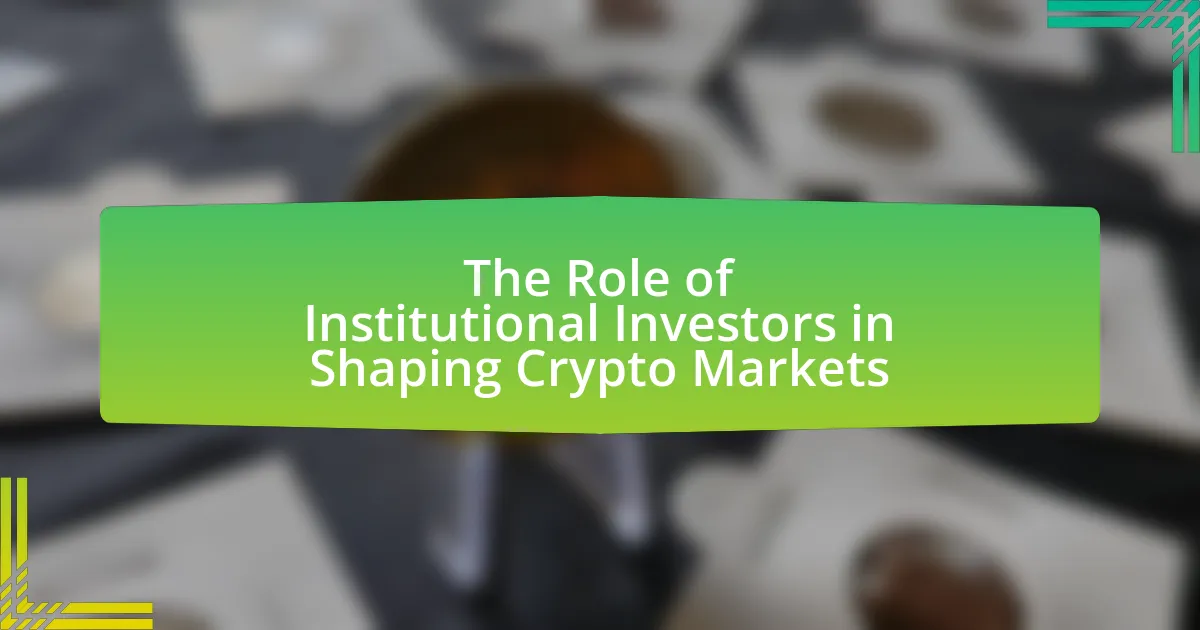Decentralized Finance (DeFi) represents a transformative financial ecosystem built on blockchain technology, enabling peer-to-peer transactions without intermediaries such as banks. This article explores the fundamental differences between DeFi and traditional finance, highlighting key characteristics like transparency, accessibility, and programmability through smart contracts. It examines the main components of DeFi, including decentralized applications and liquidity pools, while addressing potential risks and challenges investors may face. Additionally, the article discusses how DeFi enhances financial inclusion, investment opportunities, and future trends, emphasizing the role of technological advancements and best practices for navigating this evolving landscape.
--Decentralized-Finance-(DeFi)-refers-to-a-financial-ecosystem-b-1.webp)
What is Decentralized Finance (DeFi)?
Decentralized Finance (DeFi) refers to a financial ecosystem built on blockchain technology that enables peer-to-peer transactions without intermediaries like banks. DeFi platforms utilize smart contracts to automate and secure financial services such as lending, borrowing, and trading. The total value locked in DeFi protocols reached over $100 billion in 2021, demonstrating significant growth and adoption in the financial sector. This shift towards decentralized systems aims to increase accessibility, reduce costs, and enhance transparency in financial transactions.
How does DeFi differ from traditional finance?
DeFi, or Decentralized Finance, differs from traditional finance primarily in its reliance on blockchain technology and smart contracts, which eliminate the need for intermediaries like banks. In traditional finance, transactions are processed through centralized institutions that manage and verify transactions, often leading to higher fees and slower processing times. In contrast, DeFi platforms operate on decentralized networks, allowing users to engage in financial activities such as lending, borrowing, and trading directly with one another, often at lower costs and with greater speed. This shift towards decentralization enhances transparency and accessibility, as all transactions are recorded on a public ledger, making them verifiable and immutable.
What are the key characteristics of DeFi?
Decentralized Finance (DeFi) is characterized by its reliance on blockchain technology, enabling peer-to-peer transactions without intermediaries. Key characteristics include transparency, as all transactions are recorded on a public ledger; accessibility, allowing anyone with an internet connection to participate; programmability, through smart contracts that automate processes; and composability, enabling different DeFi protocols to interact and build upon each other. These features collectively enhance financial inclusivity and innovation, as evidenced by the rapid growth of DeFi platforms, which saw a total value locked exceeding $80 billion in 2021, according to DeFi Pulse.
Why is decentralization important in finance?
Decentralization is important in finance because it enhances transparency, reduces reliance on intermediaries, and increases accessibility to financial services. By eliminating central authorities, decentralized finance (DeFi) allows for peer-to-peer transactions, which can lower costs and improve efficiency. For instance, according to a report by the World Economic Forum, decentralized systems can potentially save the global economy up to $1 trillion annually by streamlining processes and reducing fees associated with traditional banking. This shift empowers individuals, fosters innovation, and promotes financial inclusion, particularly in underserved regions.
What are the main components of DeFi?
The main components of DeFi are smart contracts, decentralized applications (dApps), and liquidity pools. Smart contracts automate transactions and enforce agreements without intermediaries, ensuring transparency and security. Decentralized applications provide user interfaces for interacting with blockchain networks, enabling various financial services like lending, borrowing, and trading. Liquidity pools facilitate the exchange of assets by allowing users to contribute funds, which are then used to provide liquidity for trading pairs, enhancing market efficiency. These components collectively enable a wide range of financial services in a decentralized manner, promoting accessibility and reducing reliance on traditional financial institutions.
What role do smart contracts play in DeFi?
Smart contracts are essential in DeFi as they automate and enforce agreements without intermediaries. These self-executing contracts run on blockchain technology, ensuring transparency and security in transactions. For instance, platforms like Uniswap utilize smart contracts to facilitate decentralized trading, allowing users to swap tokens directly from their wallets. This eliminates the need for traditional financial institutions, reducing costs and increasing efficiency. The use of smart contracts in DeFi has led to a significant increase in liquidity and accessibility, with the total value locked in DeFi protocols exceeding $80 billion as of 2023, demonstrating their critical role in transforming modern investment approaches.
How do decentralized exchanges (DEXs) function?
Decentralized exchanges (DEXs) function by enabling peer-to-peer trading of cryptocurrencies without the need for a central authority. They utilize smart contracts on blockchain networks to facilitate transactions directly between users, ensuring that trades are executed automatically and securely. DEXs operate on liquidity pools, where users provide their assets to facilitate trading, earning fees in return. This model enhances transparency and reduces the risk of hacks associated with centralized exchanges, as users retain control of their funds throughout the trading process.
What are the potential risks associated with DeFi?
The potential risks associated with DeFi include smart contract vulnerabilities, regulatory uncertainty, and market volatility. Smart contracts, which automate transactions, can contain bugs or security flaws that may be exploited, leading to significant financial losses; for instance, the DAO hack in 2016 resulted in the loss of $60 million worth of Ether due to a vulnerability in its smart contract. Regulatory uncertainty poses risks as governments may impose restrictions or bans on DeFi activities, impacting the market and user participation. Additionally, market volatility can lead to drastic price fluctuations, which can result in substantial losses for investors, as seen during the 2020 DeFi summer when many tokens experienced extreme price swings.
How can users protect themselves from DeFi risks?
Users can protect themselves from DeFi risks by conducting thorough research on protocols and projects before investing. This includes reviewing the project’s whitepaper, understanding the technology, and assessing the team behind it. Additionally, users should utilize reputable platforms and wallets, enable two-factor authentication, and diversify their investments to mitigate potential losses. According to a report by the Blockchain Research Institute, 70% of DeFi projects have experienced security breaches, highlighting the importance of due diligence and risk management in this space.
What are the common vulnerabilities in DeFi protocols?
Common vulnerabilities in DeFi protocols include smart contract bugs, oracle manipulation, and liquidity risks. Smart contract bugs arise from coding errors that can be exploited, leading to significant financial losses; for instance, the DAO hack in 2016 resulted in a loss of $60 million due to a vulnerability in the smart contract code. Oracle manipulation occurs when external data sources are compromised, allowing attackers to influence price feeds and execute fraudulent transactions. Liquidity risks manifest when there is insufficient liquidity to support trading, which can lead to slippage and price volatility. These vulnerabilities highlight the need for rigorous security audits and robust risk management practices in DeFi.

How is DeFi transforming modern investment approaches?
DeFi is transforming modern investment approaches by enabling decentralized, peer-to-peer financial transactions without intermediaries. This shift allows investors to access a broader range of financial services, such as lending, borrowing, and trading, directly on blockchain platforms. For instance, platforms like Aave and Uniswap facilitate instant transactions and yield farming, which can offer higher returns compared to traditional finance. Additionally, DeFi’s transparency and programmability through smart contracts reduce costs and increase efficiency, as evidenced by the rapid growth of total value locked in DeFi protocols, which surpassed $100 billion in 2021.
What investment opportunities does DeFi provide?
Decentralized Finance (DeFi) provides investment opportunities such as yield farming, liquidity mining, and decentralized lending. Yield farming allows users to earn interest on their cryptocurrency holdings by providing liquidity to decentralized exchanges, often yielding returns that can exceed traditional finance rates. Liquidity mining incentivizes users to supply liquidity to DeFi protocols in exchange for tokens, which can appreciate in value. Decentralized lending platforms enable users to lend their assets and earn interest, while borrowers can access loans without intermediaries. According to a report by DeFi Pulse, the total value locked in DeFi protocols reached over $80 billion in 2021, highlighting the growing interest and potential returns in this sector.
How do yield farming and liquidity mining work?
Yield farming and liquidity mining are mechanisms in decentralized finance (DeFi) that allow users to earn rewards by providing liquidity to decentralized exchanges or protocols. In yield farming, users deposit their cryptocurrency into a liquidity pool and earn interest or tokens as rewards, often based on the amount and duration of their contribution. Liquidity mining specifically refers to the practice of earning tokens as rewards for supplying liquidity, incentivizing users to participate in the ecosystem.
For example, a user might provide Ethereum to a decentralized exchange’s liquidity pool and receive governance tokens in return, which can be used to influence the protocol’s future. This process enhances liquidity in the market, facilitating smoother transactions and trading. According to a report by DeFi Pulse, as of October 2023, the total value locked in DeFi protocols, which includes yield farming and liquidity mining, exceeds $50 billion, demonstrating the significant role these practices play in the DeFi landscape.
What are the benefits of investing in DeFi assets?
Investing in DeFi assets offers benefits such as high liquidity, accessibility, and potential for high returns. DeFi platforms enable users to trade assets without intermediaries, resulting in lower fees and faster transactions. According to a report by DeFi Pulse, the total value locked in DeFi protocols reached over $80 billion in 2021, indicating significant investor interest and potential for growth. Additionally, DeFi allows for yield farming and staking, which can generate passive income through interest or rewards. These features make DeFi assets an attractive option for diversifying investment portfolios.
How does DeFi enhance accessibility in investing?
DeFi enhances accessibility in investing by removing traditional barriers such as intermediaries and high fees, allowing anyone with an internet connection to participate in financial markets. This democratization of finance enables individuals from diverse economic backgrounds to access investment opportunities that were previously limited to wealthy investors or institutions. For instance, platforms like Uniswap and Aave allow users to trade and lend assets directly, facilitating participation without the need for a bank account or credit history. According to a report by the World Economic Forum, DeFi could potentially unlock $1 trillion in value by providing financial services to the unbanked and underbanked populations globally.
What impact does DeFi have on financial inclusion?
Decentralized Finance (DeFi) significantly enhances financial inclusion by providing access to financial services for unbanked and underbanked populations. Traditional banking systems often exclude individuals due to high fees, lack of identification, or geographical barriers. In contrast, DeFi platforms operate on blockchain technology, allowing anyone with internet access to participate in financial activities such as lending, borrowing, and trading without intermediaries. According to a report by the World Economic Forum, over 1.7 billion adults globally remain unbanked, and DeFi can bridge this gap by offering decentralized applications that require minimal entry barriers. This democratization of finance empowers individuals, fosters economic participation, and promotes financial literacy, ultimately contributing to broader economic growth.
How can individuals participate in DeFi without prior experience?
Individuals can participate in DeFi without prior experience by using user-friendly platforms that offer guided interfaces and educational resources. Many DeFi applications, such as decentralized exchanges and lending protocols, provide step-by-step tutorials and demo accounts to help newcomers understand the process. For instance, platforms like Uniswap and Aave have intuitive designs that simplify trading and lending, making it accessible for beginners. Additionally, resources like online courses and community forums can enhance understanding and confidence in navigating DeFi.
What challenges do investors face in the DeFi space?
Investors in the DeFi space face several challenges, including high volatility, security risks, regulatory uncertainty, and lack of user-friendly interfaces. High volatility is evident as DeFi assets can experience significant price fluctuations, leading to potential losses. Security risks arise from smart contract vulnerabilities and hacking incidents; for instance, in 2021, DeFi protocols lost over $1.3 billion to hacks. Regulatory uncertainty complicates compliance, as laws governing DeFi are still evolving, creating risks for investors. Lastly, many DeFi platforms lack intuitive interfaces, making it difficult for less experienced investors to navigate the ecosystem effectively.
How does market volatility affect DeFi investments?
Market volatility significantly impacts DeFi investments by influencing liquidity, asset prices, and investor behavior. During periods of high volatility, liquidity can decrease as investors become more risk-averse, leading to wider spreads and potential slippage in transactions. Additionally, asset prices in DeFi can experience sharp fluctuations, which may result in liquidations for leveraged positions, as seen in events like the 2020 DeFi summer where many protocols faced challenges due to sudden market shifts. Furthermore, investor sentiment often shifts during volatile periods, causing a flight to stablecoins or more secure assets, which can affect the overall capital flow into DeFi projects.
What regulatory concerns surround DeFi investments?
Regulatory concerns surrounding DeFi investments primarily include issues related to compliance with anti-money laundering (AML) and know your customer (KYC) regulations. DeFi platforms often operate without centralized control, making it challenging for regulators to enforce these laws, which are designed to prevent illicit activities. Additionally, the lack of consumer protection measures raises concerns about fraud and market manipulation, as users may not have recourse in the event of a loss. The Financial Action Task Force (FATF) has emphasized the need for regulatory frameworks that address these risks, highlighting the importance of integrating DeFi into existing financial regulations to ensure safety and transparency in the market.

What are the future trends of DeFi in investment strategies?
Future trends of DeFi in investment strategies include increased integration with traditional finance, enhanced regulatory frameworks, and the rise of automated investment protocols. As DeFi platforms evolve, they are likely to attract institutional investors, leading to a convergence of decentralized and centralized finance. Regulatory clarity will foster trust and wider adoption, while automated protocols, such as yield farming and liquidity mining, will streamline investment processes and optimize returns. These trends are supported by the growing market capitalization of DeFi, which reached over $100 billion in 2021, indicating significant investor interest and potential for future growth.
How is DeFi evolving with technological advancements?
DeFi is evolving through technological advancements by integrating innovations such as smart contracts, layer-2 scaling solutions, and interoperability protocols. These technologies enhance transaction efficiency, reduce costs, and improve user experience. For instance, the implementation of Ethereum 2.0 aims to increase transaction throughput and decrease energy consumption, which directly benefits DeFi applications by enabling faster and cheaper transactions. Additionally, the rise of cross-chain protocols like Polkadot facilitates asset transfers between different blockchains, expanding the DeFi ecosystem and increasing liquidity. These advancements collectively contribute to the growth and adoption of DeFi, making it a more viable alternative to traditional finance.
What role does interoperability play in the future of DeFi?
Interoperability is crucial for the future of DeFi as it enables seamless interaction between different blockchain networks and protocols. This interconnectedness allows users to transfer assets and data across platforms, enhancing liquidity and expanding access to diverse financial services. For instance, projects like Polkadot and Cosmos are designed specifically to facilitate interoperability, demonstrating its importance in creating a more integrated DeFi ecosystem. By fostering collaboration among various DeFi applications, interoperability can drive innovation, reduce fragmentation, and ultimately lead to a more efficient and user-friendly financial landscape.
How might artificial intelligence influence DeFi investment strategies?
Artificial intelligence can significantly influence DeFi investment strategies by enhancing data analysis, risk assessment, and automated trading. AI algorithms can process vast amounts of blockchain data to identify trends and predict market movements, allowing investors to make informed decisions. For instance, AI-driven platforms can analyze historical price patterns and social media sentiment to forecast asset performance, improving the accuracy of investment strategies. Additionally, AI can optimize liquidity management and yield farming by dynamically adjusting strategies based on real-time market conditions, thereby maximizing returns. The integration of AI in DeFi is evidenced by projects like Numerai, which uses machine learning to crowdsource predictions for hedge fund investments, demonstrating the practical application of AI in enhancing investment outcomes.
What are the best practices for investing in DeFi?
The best practices for investing in DeFi include conducting thorough research, diversifying investments, using reputable platforms, and understanding the risks involved. Conducting thorough research ensures that investors are aware of the projects they are investing in, including their technology, team, and market potential. Diversifying investments across different DeFi projects can mitigate risks associated with any single asset. Using reputable platforms, which have undergone security audits and have a strong community presence, reduces the likelihood of encountering scams or hacks. Understanding the risks, such as smart contract vulnerabilities and market volatility, is crucial for making informed investment decisions. These practices are supported by the increasing number of resources and communities dedicated to educating investors about DeFi, highlighting the importance of informed participation in this rapidly evolving space.
How can investors conduct due diligence in DeFi projects?
Investors can conduct due diligence in DeFi projects by thoroughly analyzing the project’s whitepaper, assessing the team’s credentials, and evaluating the smart contract code for vulnerabilities. A detailed examination of the whitepaper provides insights into the project’s goals, technology, and tokenomics, while the team’s background can indicate their capability and reliability. Additionally, reviewing the smart contract code, often available on platforms like GitHub, allows investors to identify potential security risks, as evidenced by the numerous hacks in DeFi history due to poorly audited contracts. Furthermore, checking community engagement and feedback on platforms like Discord or Twitter can reveal the project’s reputation and user trust.
What strategies can enhance returns while managing risks in DeFi?
To enhance returns while managing risks in DeFi, investors can employ strategies such as diversification, yield farming, and utilizing decentralized insurance protocols. Diversification across various DeFi projects reduces exposure to any single asset’s volatility, thereby mitigating risk. Yield farming allows investors to earn interest on their crypto assets by providing liquidity to decentralized exchanges, which can significantly increase returns. Additionally, decentralized insurance protocols offer protection against smart contract failures and other risks, further safeguarding investments. These strategies are supported by the growing adoption of DeFi, which saw a total value locked (TVL) exceeding $100 billion in 2021, indicating robust market confidence and potential for returns.
It is not possible to provide an answer to the question “
” as it does not contain a specific inquiry or context to address.






